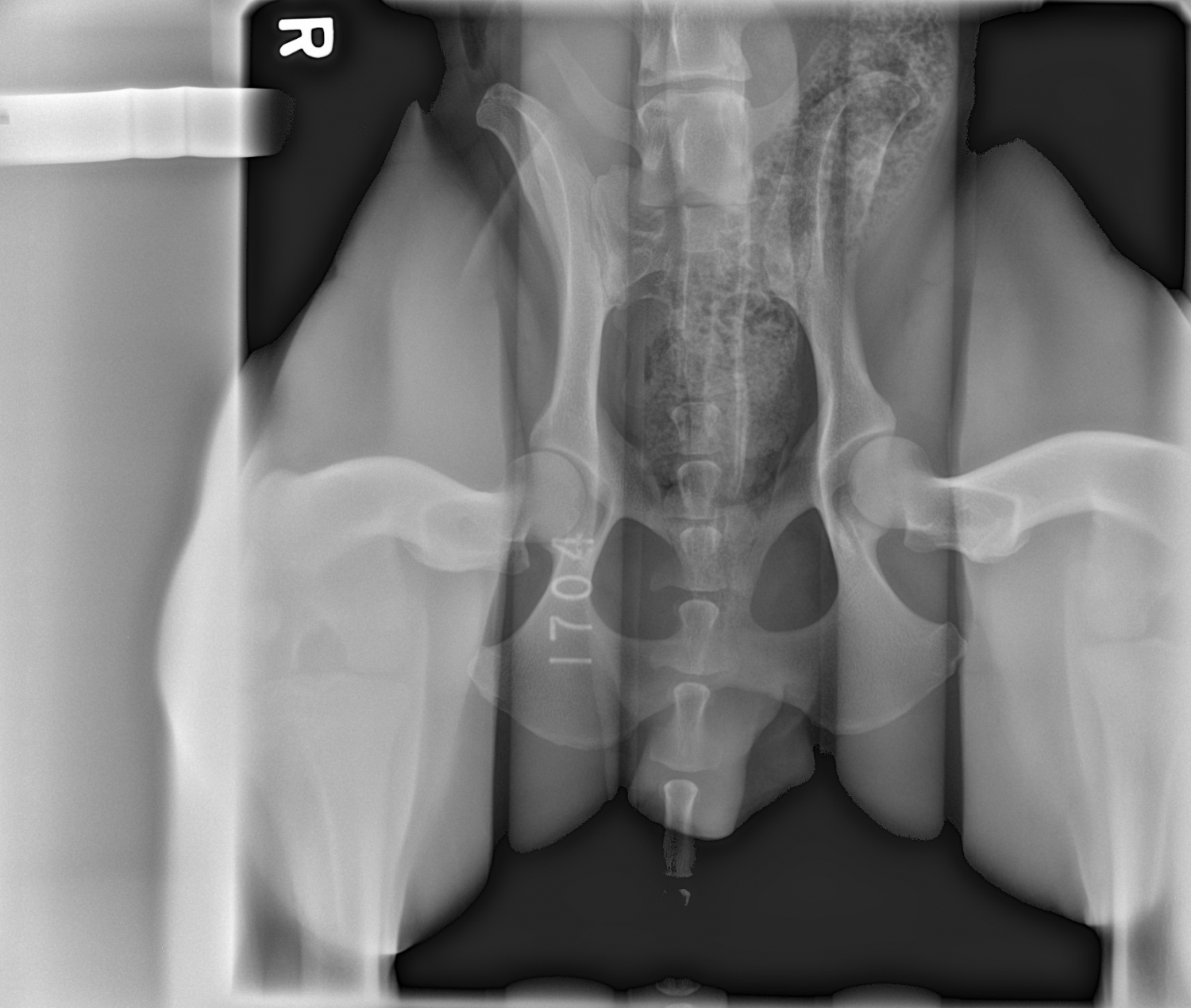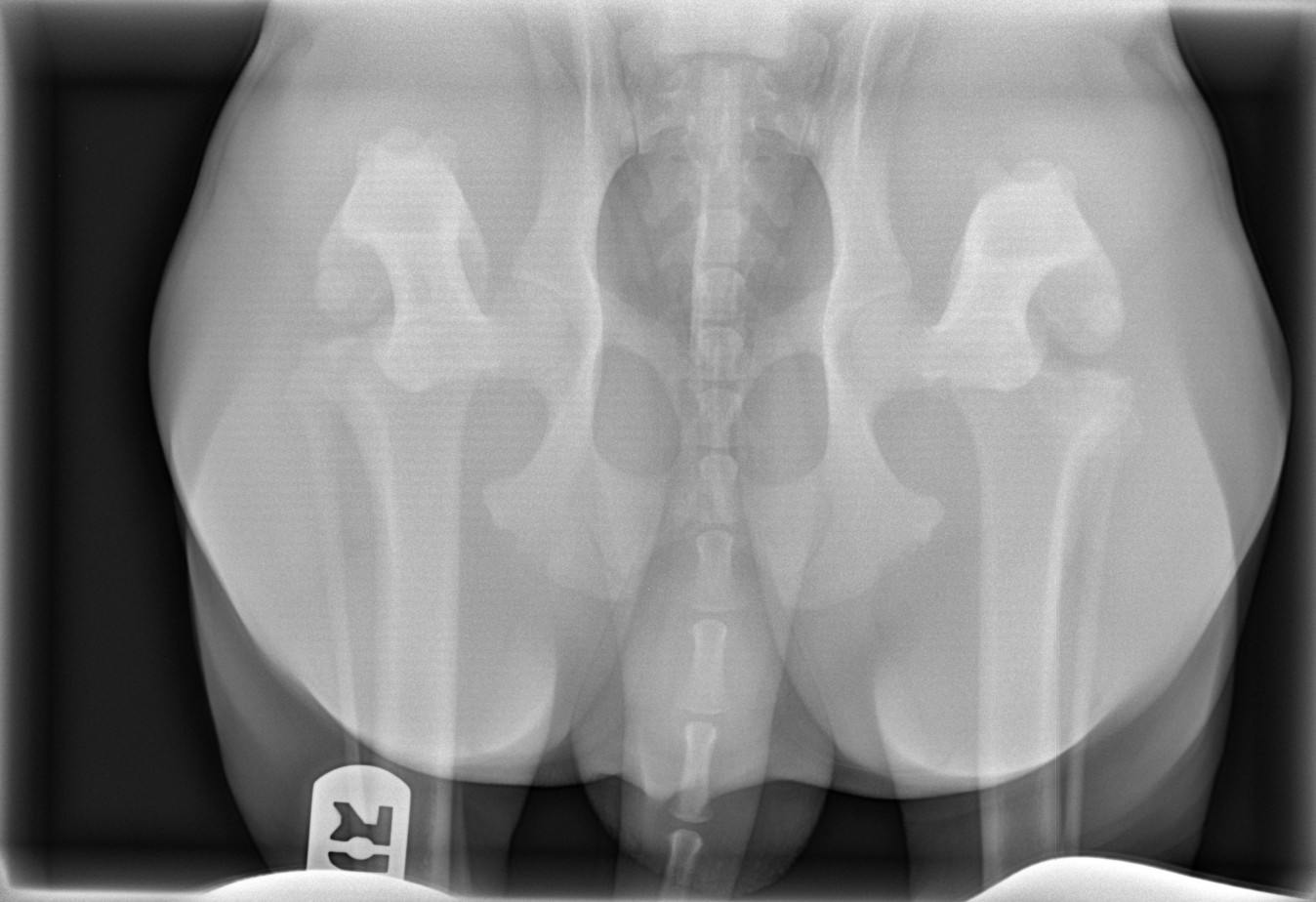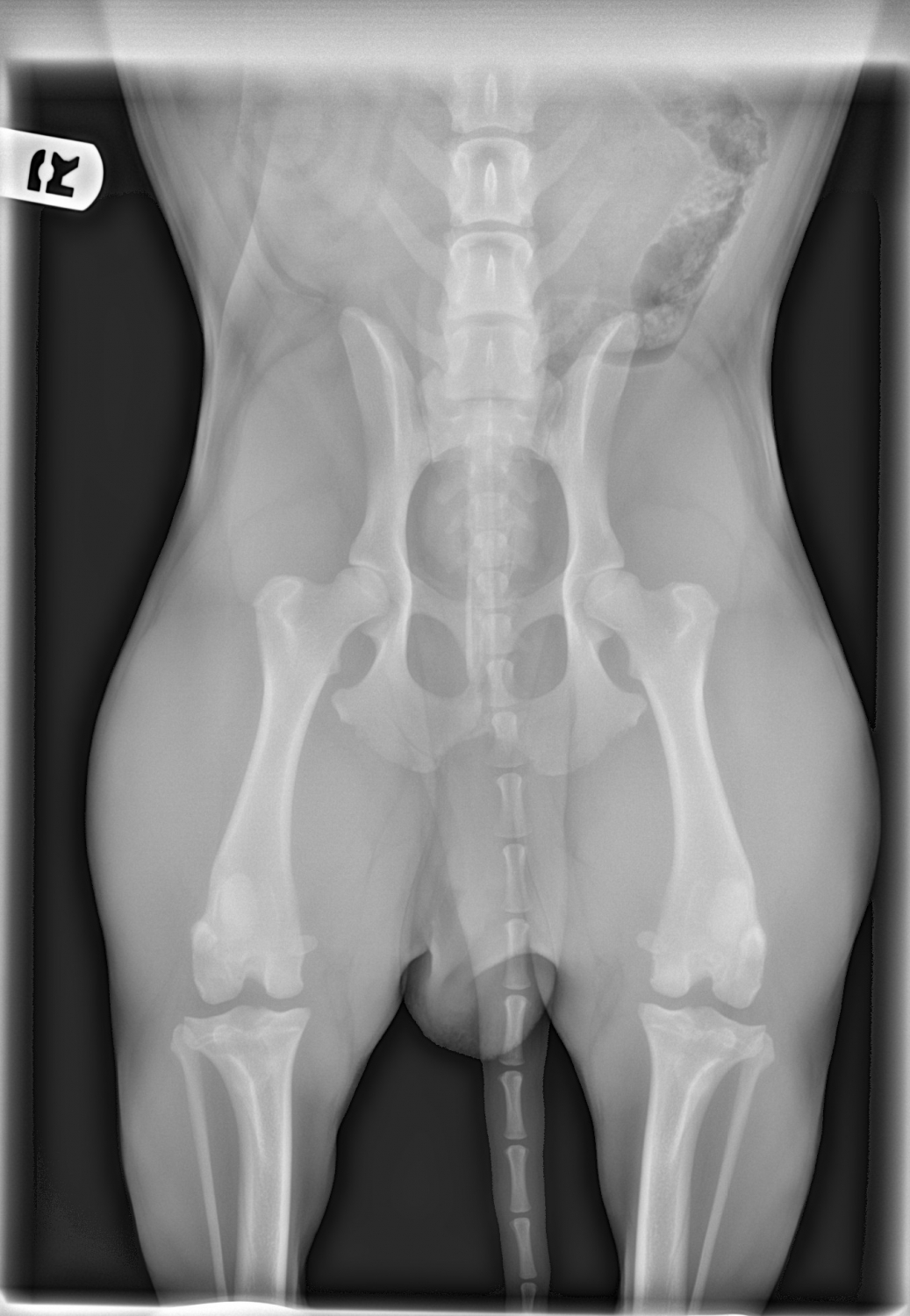|
PennHIP Evaluation
Dr. Gordon has been performing the PennHIP evaluation for over 10 years. PennHIP stands for The University of Pennsylvania Hip Improvement Program. This procedure has been validated to assess hip dysplasia in dogs as young as 4 months of age. It is different from an Orthopedic Foundation for Animals (OFA) evaluation because they are measuring hip joint laxity. PennHIP can be used as a tool to help predict the development of osteoarthritis and it compares how your dog's hips are in comparison to other dogs that are in the same breed. PennHIP is often used by breeders wanting to better their breeding program (by producing tighter hips) but is also often used by people involved in sport dog activities to make sure their dogs can handle the physical stress of competition.
The PennHip evaluation is done under sedation and needs to be done by a veterinarian or technician who has gone through the training and received certification.
PennHIP at a Glance
The PennHIP method is a novel way to assess, measure and interpret hip joint laxity. It consists of three separate radiographs: the distraction view, the compression view and the hip-extended view. The distraction view and compression view are used to obtain accurate and precise measurements of joint laxity and congruity. The hip-extended view is used to obtain supplementary information regarding the existence of osteoarthritis (OA) of the hip joint. (The hip-extended view is the conventional radiographic view used to evaluate the integrity of the canine hip joint.) The PennHIP technique is more accurate than the current standard, and it has been shown to be a better predictor for the onset of OA.
The radiographs pictured here are of the same dog, yet the hip joint laxties in each view look very different. Notice that the hips in the distraction view appear to be much looser than they do in the hip-extended view.
To summarize, PennHIP method:
- Obtains OA readings from the standard hip-extended view
- Obtains hip joint congruity readings from the compression view
- Obtains quantitative measurements of hip joint laxity from the distraction view
I am interested in having my dog's hips PennHIP evaluated. What should I do?
- Please call our office for an appointment. We prefer to do these on Wednesdays.
- Your dog will be sedated. Please follow our suggestions for withholding food.
- Please provide your dog's registration name and number if your dog is in a registrable database AT THE TIME your appointment is made AND when you drop your dog off for their PennHIP appointment.
Distraction View
|
|

|
|
|
Compression View
|
|
 
|
|
|
Hip-Extended View
|
|

|
The obvious contrast in joint laxity between the distraction and hip-extended views demonstrates the fundamental difference between the two radiographs. The looser the joint on the distraction view, the greater is the chance that the hip will develop OA. The hip-extended view tends to mask true hip joint laxity because the joint capsule is wound up into a tightened orientation when the hips are extended. This explains why measurable joint laxity on the distraction view is always greater than the measurable laxity from the hip-extended view. In fact, distraction laxity is up to 11 times greater depending on the breed of dog under study.
The compression view is used to determine the "goodness of fit" of the femoral head(s) into the acetabula. In a hip with OA, the remodeling that occurs in the acetabulum and/or the femoral head, will often result in an ill-fitting "ball" and "socket".
| 





